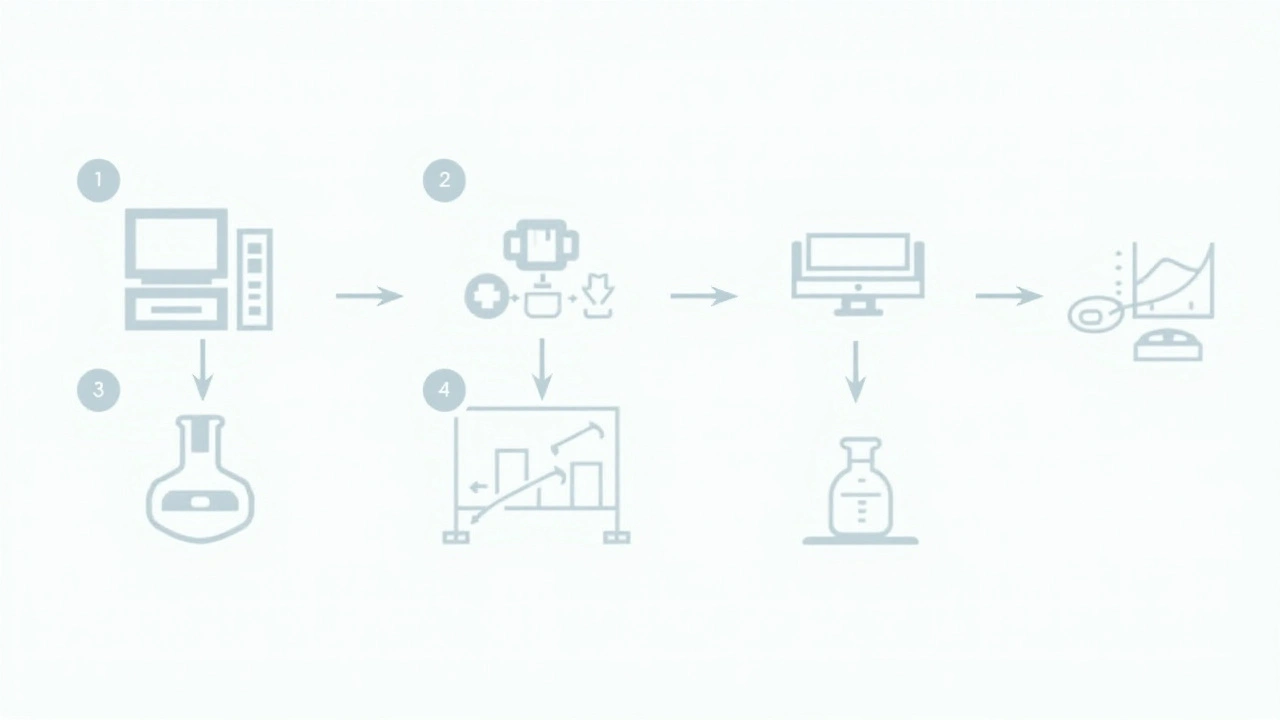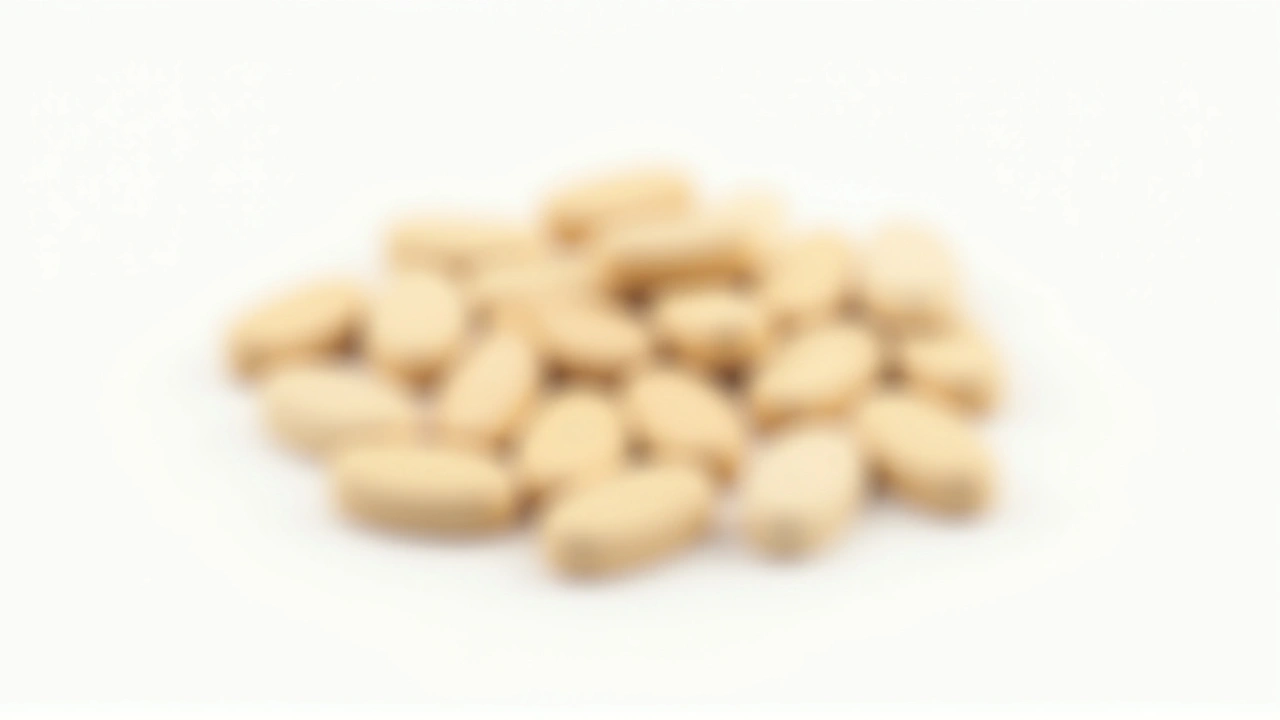Introduction
Acute gastroenteritis (AGE) is a common condition in children that often results in vomiting, a symptom that can lead to dehydration and require urgent medical intervention. Managing vomiting effectively in pediatric patients is crucial to prevent complications. A recent study from Pakistan has shed light on the comparative efficacy of two widely used medications: oral ondansetron and domperidone. Conducted in the pediatric emergency department, this study offers valuable insights into the treatment options for young children afflicted with AGE.
The Study's Framework
The objective of the study was straightforward: to compare the effectiveness of oral ondansetron and domperidone in ceasing vomiting in young children affected by AGE. Researchers selected children aged between 1 to 60 months who were experiencing acute vomiting but did not exhibit severe dehydration symptoms. These children were then randomized into two treatment groups. Group A received ondansetron suspension at a dose of 0.15 mg/kg body weight, while Group B was administered domperidone suspension at a dose of 0.5 mg/kg body weight.
Key Findings at Six Hours
Initial results at the six-hour mark showed significant improvement in both groups, albeit with a slight edge for ondansetron. In Group A, 87% of the children showed a reduction in vomiting episodes, compared to 81% in Group B. Although this difference was not statistically significant, it hinted at ondansetron's slightly superior performance.
Results After Twenty-Four Hours
The primary outcome measure was the number of children who did not experience any vomiting episodes 24 hours post-treatment. The findings at this critical juncture were far more telling. By the 24-hour mark, an impressive 95% of children in the ondansetron group had shown significant improvement, in stark contrast to 85% in the domperidone group. This time, the difference was statistically significant, suggesting a clear advantage for ondansetron.

Implications of the Results
The implications of these findings are far-reaching. Ondansetron, a medication primarily known for its use in preventing nausea and vomiting caused by chemotherapy, radiation therapy, and surgery, has now been shown to be highly effective in pediatric patients with AGE. This is particularly important given the high incidence of AGE in young children and the potential for serious dehydration.
The study underscores the importance of considering ondansetron as a first-line treatment for vomiting in children with AGE. Its higher efficacy could potentially lead to reduced hospital admissions, lower healthcare costs, and most importantly, quicker relief and recovery for the young patients.
Methodology and Reliability
Conducted by a team comprising Hamza Hanif, Hassam Jaffry, Fatima Jamshed, FNU Amreek, Naresh Kumar, Wajid Hussain, and Amber Rizwan, the study was meticulous in its methodology. By selecting a well-defined patient pool and employing a randomized approach, the researchers ensured the reliability of their results. The setting in a pediatric emergency department further adds to the study's real-world applicability.
Comparative Analysis
While domperidone has been a staple in treating vomiting due to its prokinetic properties, its comparative performance in this study suggests that it may not be the most efficacious option. Ondansetron's superior performance could be attributed to its mechanism of action, which involves blocking serotonin receptors that are involved in the vomiting reflex. This pharmacological distinction likely accounts for its higher efficacy in managing AGE-induced vomiting.

Conclusion
In conclusion, this study provides compelling evidence for the use of ondansetron over domperidone in treating vomiting in young children with AGE. With a higher percentage of improvement observed within 24 hours, ondansetron emerges as a more effective option. As healthcare providers aim for the best outcomes in pediatric care, ondansetron should be considered a preferred choice for managing vomiting in cases of acute gastroenteritis.
The findings also open avenues for further research to explore the long-term benefits and any potential side effects of ondansetron in pediatric patients. Nonetheless, this study marks a significant step forward in the quest for effective management of acute gastroenteritis in children.

Comments (10)
Kara Lippa
August 20, 2024 AT 14:21
It's great to see solid data backing ondansetron for kids with gastroenteritis. The numbers look promising, especially the 95% success at 24 hours. While domperidone still helps, the slight edge could mean fewer ER visits. Overall, looks like a win for parents and clinicians alike.
Puneet Kumar
August 21, 2024 AT 02:26
The pharmacodynamic profile of a 5‑HT3 antagonist like ondansetron rationalizes its superior anti‑emetic efficacy over a D2‑receptor agonist such as domperidone. In the context of acute viral gastroenteritis, blockade of serotonin-mediated chemoreceptor trigger zones curtails the emetic cascade more efficiently. Moreover, the study's randomized controlled design mitigates selection bias, reinforcing internal validity. The hazard ratio, albeit modest, aligns with prior meta‑analyses, suggesting a reproducible therapeutic signal.
michael maynard
August 21, 2024 AT 16:20
Sure, the pharma giants want us to keep doling out cheap domperidone while hiding ondansetron’s real power.
Roger Bernat Escolà
August 22, 2024 AT 06:13
Wow, reading this feels like watching a slow‑burn drama where the underdog finally gets its spotlight. For years we've been stuck with domperidone, watching kids suffer unnecessary vomiting. Then comes ondansetron, swooping in like the hero of the episode. It’s almost poetic how a drug from chemo wards finds its place in a pediatric ER. I can almost hear the sighs of relief from exhausted parents. The numbers don’t lie, and the story writes itself.
Allison Metzner
August 23, 2024 AT 10:00
Reading these results feels like the tip of an iceberg that no one wanted to acknowledge. The pharmaceutical lobby has been quietly pushing domperidone for decades, branding it as the affordable workhorse while downplaying newer agents. Behind the scenes, there are whispers that big pharma purposely suppresses data on ondansetron's pediatric benefits to protect market share of older generics. The study from Pakistan is a rare glimpse into what could be a global oversight. If you dig into the funding disclosures, you’ll notice the absence of major drug company sponsorship, which is oddly reassuring yet suspicious. Some argue that the lack of conflict of interest is just a façade for hidden agendas. Meanwhile, hospitals continue to stock domperidone because it’s cheaper, and that cost argument is conveniently highlighted in budget meetings. But cost shouldn’t trump clinical outcomes, especially when dehydration can lead to intensive care admissions. The 95% success rate of ondansetron at 24 hours is not just a statistic; it’s a public health lever that could reduce strain on already overloaded emergency departments. Yet, the adoption curves are sluggish, as if there’s an invisible hand steering prescribing habits. One could even speculate that insurance formularies are structured to favor older, less expensive drugs, locking clinicians into a cycle of suboptimal therapy. The data also suggests fewer re‑visits to the ER, which should be a win‑win for both families and healthcare systems. So why does the narrative remain so slow to shift? Perhaps because changing guidelines requires a concerted push from stakeholders who have been complacent. In any case, this study should serve as a rallying cry for clinicians to question the status quo and demand wider access to the most effective treatments. The truth, as always, is buried beneath layers of bureaucracy, but it’s up to us to peel them back.
william smith
August 23, 2024 AT 23:53
In practice, a single 0.15 mg/kg dose of ondansetron is easy to administer and has a rapid onset, often within 15‑30 minutes. This can be a game‑changer for dehydrated kids waiting for oral rehydration.
Timothy Javins
August 24, 2024 AT 13:46
Honestly, I think the difference is over‑hyped; many kids will stop vomiting regardless of the drug used.
Kay Yang
August 25, 2024 AT 03:40
Looks like ondansetron is stepping up, which is good news for little ones 😊.
Rajesh Kumar Batham
August 25, 2024 AT 17:33
Both meds have their place – ondansetron for quick control, domperidone when cost is a concern 🩺👍.
Bill Gallagher
August 26, 2024 AT 07:26
The pharmacokinetic properties of ondansetron, characterized by a half‑life of approximately 3‑4 hours, facilitate sustained plasma concentrations that effectively suppress the emetic reflex; in contrast, domperidone exhibits a shorter half‑life and limited central nervous system penetration, which may underlie its comparatively modest efficacy. Moreover, the dose‑response relationship observed in pediatric populations suggests that even low‑dose ondansetron achieves therapeutic plasma levels without incurring significant adverse effects; this is corroborated by multiple randomized controlled trials, meta‑analyses, and systematic reviews, all converging on a consistent safety profile. It is also worth noting that ondansetron’s antagonism of the 5‑HT3 receptor directly targets the chemoreceptor trigger zone, a pivotal node in the vomiting cascade, whereas domperidone’s prokinetic action primarily modulates gastric motility, offering only indirect anti‑emetic benefits. Consequently, when rapid symptom resolution is paramount – as in acute gastroenteritis, where dehydration risk escalates swiftly – ondansetron emerges as the logical first‑line agent. Of course, health economic analyses must also be weighed; the higher acquisition cost of ondansetron may be offset by reduced hospital admissions and shorter lengths of stay, ultimately delivering cost‑effectiveness across the care continuum.